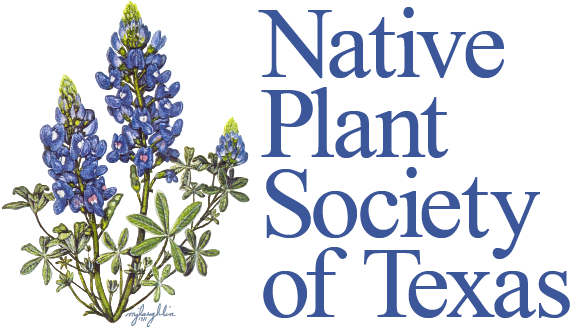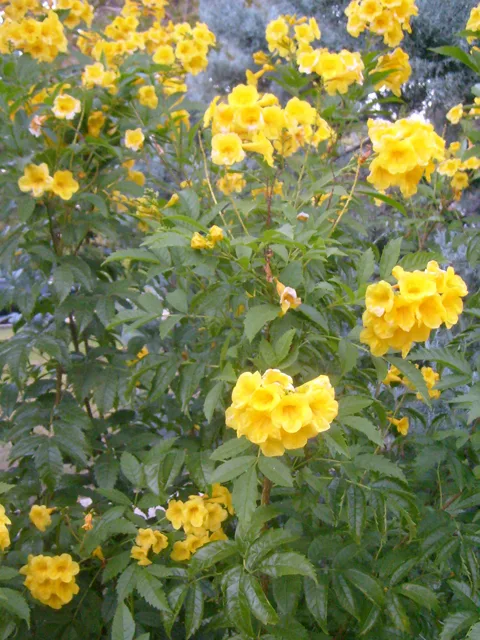Esperanza, also known as “yellow bells” and “yellow trumpet,” is a native shrub with a tropical feel.
A N.I.C.E. spring plant for 2024 and a Texas Super Star.
Natives Improve and Conserve Environments
That’s N.I.C.E!
The N.I.C.E program promotes the use of native vegetation in our landscaping – to support a functioning ecosystem and to celebrate the unique character of the Texas landscape. A native is a plant that lives or grows naturally in a particular region without direct or indirect human intervention.
Have you noticed the difference between a plant native to its region . . .and the non-native species imported from other regions of this country or other continents?
When choosing a plant for my garden, my argument (and maybe yours) was always – 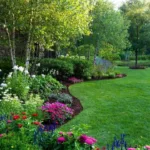
“Every plant flowers. (The blooms are frequently spectacular.)
Every plant produces nectar. . . and pollen. . . and seeds.
Besides, I want my garden to look like the pictures in the magazines.”
True?
However,
we have to recognize the impact our decisions make on the lives of all the creatures around us.
Our homogenized landscape of introduced exotic and ornamental plants – created from the big box-store offerings –
grows faster, is susceptible to pests and diseases,
and often requires large amounts of water, fertilizer, weed killer, and maintenance.
The plants growing from seeds that are distributed by the wind, escape cultivation,
become aggressive, and engulf the functional native ecosystem
until native vegetation that has evolved to withstand our temperature, poor soil, and moisture extremes,
are crowded out or eaten to extinction.
The Harsh Truth:
Our native wildlife – the birds, butterflies, pollinators, and other organisms – require the plants that supply their food and shelter.
Introducing non-native plants and bushes to your yard actually makes it harder for the butterflies and birds in your neighborhood to survive.
Doug Tallamy, author, professor and chair of entomology and wildlife ecology at the University of Delawar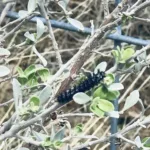 e, explains,
e, explains,
“For instance, if you want chickadees to breed in your yard, you need plants that can support the 6,000 to 9,000 caterpillars the birds need during the 16 days they feed their young. “If you don’t have that, the plant-caterpillar-chickadee food web stops. If you plant something other than native [species], then right away you’re removing at least 75% of the food that is supporting the biodiversity that’s out there.”
If our gardens (yours and mine) lack plants that are indigenous to our region, they are ecological deserts for the birds and pollinating insects that are essential to our survival.
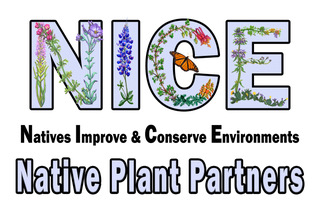
The Fredericksburg and Kerrville chapters of the Native Plant Society of Texas
encourage you to explore the way nature creates beauty and to see color and texture as a palate that draws and enhances life to your environment.
At the turn of each season the chapters promote a native plant that thrives in our thin, rocky soil and in our particular climate of extremes.
The area’s participating “NICE” nurseries team with us *to insure availability
* and introduce you to the spectacular beauty of a native plant that may be unfamiliar.
Help reestablish native plant communities in your yard and community. Choose to landscape with the exotic beauty of native plants.
Local Nurseries supporting N.I.C.E.
- Blue Oak Trading Company, 1834 Junction Highway, Kerrville, 830-315-2583
- Natives of Texas, 4256 Medina Highway, Kerrville, 830-896-2169
- Plant Haus 2, 604 Jefferson Street, Kerrville, 830-792-4444
- The Gardens at The Ridge, 13439 S. Ranch Road 783 (Harper Rd.), Kerrville, 830-896-0430
- Friendly Natives, 1107 N. Llano Street, Fredericksburg, 830-997-6288
- Medina Garden Nursery, 13417 TX Highway 16, Medina, 830-589-2771
Look for the “NICE Plant of the Season” logo stake: (As you explore, you’ll find other beautiful Native plants also.)
Prior seasons of NICE plants for your landscape!
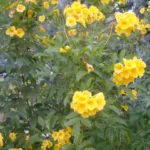 Spring, 2024 Esperanza (Tecoma stans), also known as “yellow bells” and “yellow trumpet,” is a native shrub with a tropical feel. Call it eye candy for your summer landscape – if you get it planted during the spring! Settled in place, it is known for its long bloom time, heat tolerance, and low water use.
Spring, 2024 Esperanza (Tecoma stans), also known as “yellow bells” and “yellow trumpet,” is a native shrub with a tropical feel. Call it eye candy for your summer landscape – if you get it planted during the spring! Settled in place, it is known for its long bloom time, heat tolerance, and low water use.

Summer, 2023 Rock Rose (Pavonia lasiopetala),- definitely this is a rose by another name. Are you looking for some bright pink flowers to add to your garden? Look no further than Rock Rose. This beauty, also known as rose mallow or rose pavonia, is actually native to our own Edwards Plateau and the Trans-Pecos region to our west.
 Spring, 2023 Mealy Blue Sage, Salvia farinacea, has been evident in the fields since mid March providing pollinators with an early breakfast to start the season. Mealy blue describes the powdered, mottled white/blue flower color of this member of the mint family. Like all mints it sets deep roots to hold our soil and moisture during hot sun summers. Expect it to bloom until frost. Next spring cut out the deadwood and allow the new growth to revive from the roots.
Spring, 2023 Mealy Blue Sage, Salvia farinacea, has been evident in the fields since mid March providing pollinators with an early breakfast to start the season. Mealy blue describes the powdered, mottled white/blue flower color of this member of the mint family. Like all mints it sets deep roots to hold our soil and moisture during hot sun summers. Expect it to bloom until frost. Next spring cut out the deadwood and allow the new growth to revive from the roots.
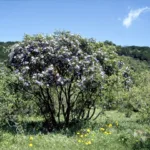 Winter, 2022 This is the best time of the year to plant a tree on the Edwards Plateau. A temperate sun encourages the roots of young plants to become established, and spring rains are just around the corner. And the Texas Mountain Laurel (Sophora secundiflora) beckons. It is drought-tolerant, prefers rocky limestone soil, and is native from central Texas west to New Mexico.
Winter, 2022 This is the best time of the year to plant a tree on the Edwards Plateau. A temperate sun encourages the roots of young plants to become established, and spring rains are just around the corner. And the Texas Mountain Laurel (Sophora secundiflora) beckons. It is drought-tolerant, prefers rocky limestone soil, and is native from central Texas west to New Mexico.
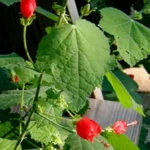
Summer, 2022 It is hard to miss a Turk’s Cap in the summer. Its multitude of bright red, uniquely-shaped flowers set against dark green foliage draw not just the human eye but also many butterflies, hummingbirds, and other pollinators during its long bloom period. Its flowers are unique – bright red, with one- to two-inch long petals that stand erect and are folded into one another, making a tight bloom. A long red staminate column juts out from the center of the flower. It prefers shade – full, partial, or dappled with sun, but is equipped to survive the heat of Texas summers.
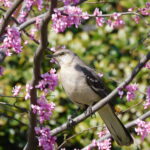 Winter, 2021 “The Texas Redbud, (Cercis canadensis var. texensis), is a multi-trunked small tree or large shrub that thrives on the thin limestone soils of the Hill Country. It is popular as a landscape plant because of its profuse clusters of tiny rose-pink blooms.” Bill Ward
Winter, 2021 “The Texas Redbud, (Cercis canadensis var. texensis), is a multi-trunked small tree or large shrub that thrives on the thin limestone soils of the Hill Country. It is popular as a landscape plant because of its profuse clusters of tiny rose-pink blooms.” Bill Ward
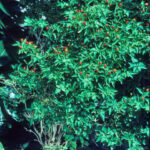 Summer, 2021 is intensified with the fiery spice of chili pequin (Capsicum annuum). Well behaved in the garden and easy to grow, this favorite can be pruned to form a dense, compact bush. The abundance of small white flowers attract bees and other pollinators. As the resulting green berries ripen to red, they become popular with the birds; but it is one of the plants that are highly resistant to deer.
Summer, 2021 is intensified with the fiery spice of chili pequin (Capsicum annuum). Well behaved in the garden and easy to grow, this favorite can be pruned to form a dense, compact bush. The abundance of small white flowers attract bees and other pollinators. As the resulting green berries ripen to red, they become popular with the birds; but it is one of the plants that are highly resistant to deer.
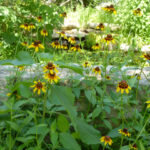 Spring,2021 has arrived with Black-eyed Susan, Standing atop slender stems, showy 2-3 inch wide golden-yellow rays frame the dramatic dark brown eyes dancing in the breeze. This is a true native prairie biennial perfectly at home both in our gardens and in our meadows. Its adaptable nature makes it a great choice for our poor soils and Gillespie County weather.
Spring,2021 has arrived with Black-eyed Susan, Standing atop slender stems, showy 2-3 inch wide golden-yellow rays frame the dramatic dark brown eyes dancing in the breeze. This is a true native prairie biennial perfectly at home both in our gardens and in our meadows. Its adaptable nature makes it a great choice for our poor soils and Gillespie County weather.
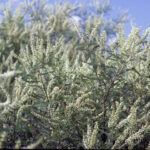 Winter, 2020 – Texas Kidneywood, (Eysenhardtia texana). A small, airy, ornamental tree which blossoms generously attracting bees and butterflies. Kidneywood foliage has a pungent, citrusy smell. Bees flock to the ambrosial flowers, which bloom at intervals through the warm months
Winter, 2020 – Texas Kidneywood, (Eysenhardtia texana). A small, airy, ornamental tree which blossoms generously attracting bees and butterflies. Kidneywood foliage has a pungent, citrusy smell. Bees flock to the ambrosial flowers, which bloom at intervals through the warm months
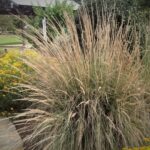 Summer, 2020 – Lindheimer Muhly grass , a true native of the Edwards Plateau, ranges from the northern edge of the plateau as far south as northern Mexico. It is an elegant, large-scale summer perennial clumpgrass that displays a fountain of silvery seedheads in the fall. Use Lindheimer Muhly as a specimen plant or for screening behind shorter grasses and bushes in place of Pampas Grass
Summer, 2020 – Lindheimer Muhly grass , a true native of the Edwards Plateau, ranges from the northern edge of the plateau as far south as northern Mexico. It is an elegant, large-scale summer perennial clumpgrass that displays a fountain of silvery seedheads in the fall. Use Lindheimer Muhly as a specimen plant or for screening behind shorter grasses and bushes in place of Pampas Grass
Spring, 2020 — Purple Coneflower (Echinacea purpurea).Even without the picture, you can see the Echinacea 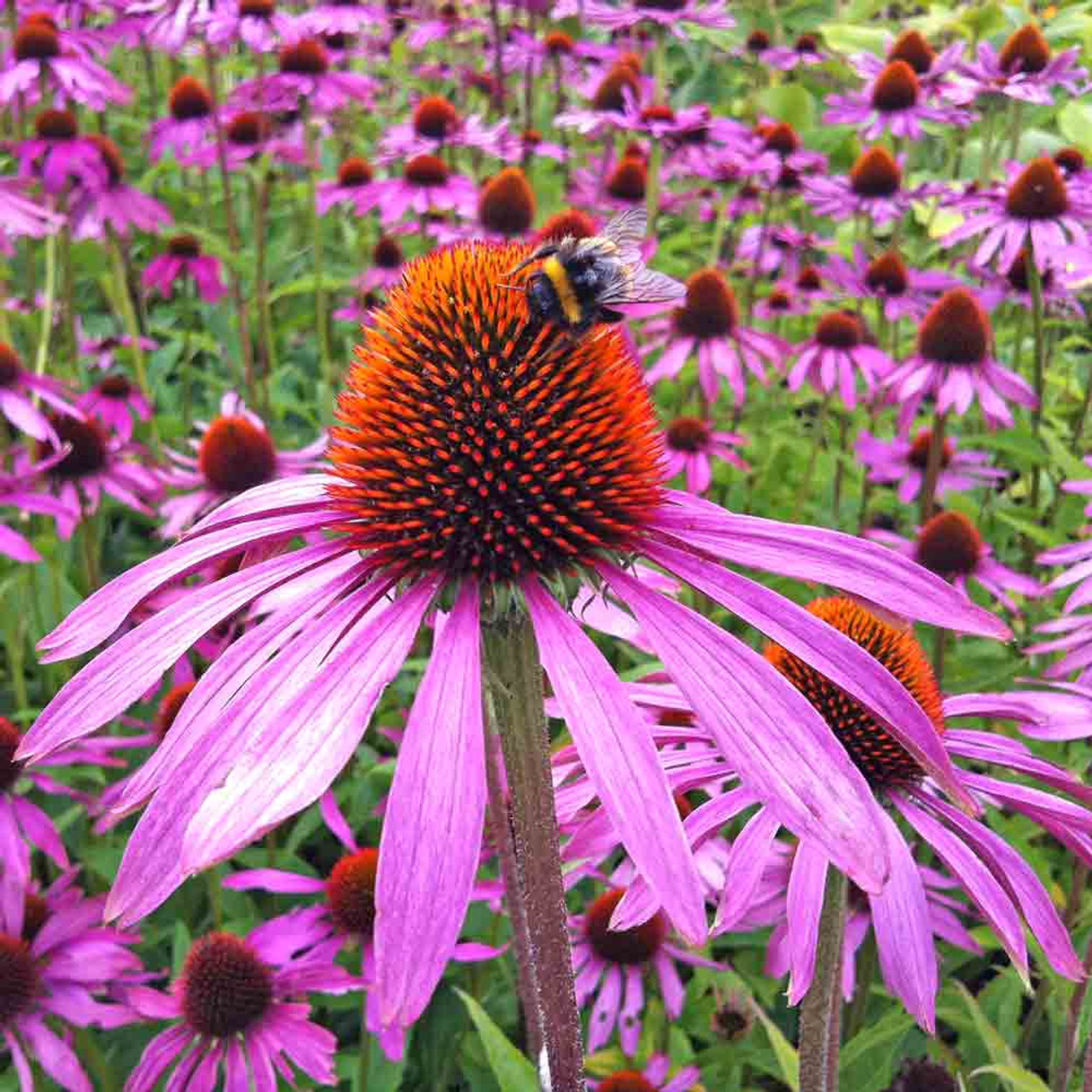 in your mind: a purple rosette of long petals lifting the tall prickly cone of reddish-brown seeds to the world. En masse, dramatic.
in your mind: a purple rosette of long petals lifting the tall prickly cone of reddish-brown seeds to the world. En masse, dramatic.
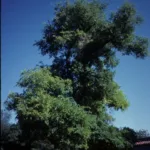 Winter, 2019 — Cedar Elm tree (Ulmus crassifolia) is one of the most common and widespread native trees in Texas. Several native birds use Cedar Elm seeds as a food and nesting source.
Winter, 2019 — Cedar Elm tree (Ulmus crassifolia) is one of the most common and widespread native trees in Texas. Several native birds use Cedar Elm seeds as a food and nesting source.
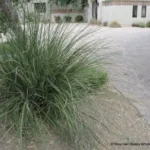 Fall, 2019 ~ Nolina. Basket Grass (Bear Grass) (Nolina texana / Texas Sacahuista) is one of the beautiful mounding “grasses” that are part of the agava family.
Fall, 2019 ~ Nolina. Basket Grass (Bear Grass) (Nolina texana / Texas Sacahuista) is one of the beautiful mounding “grasses” that are part of the agava family. 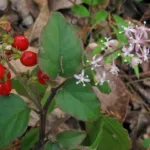 Summer, 2019 ~ Pigeonberry (Rivina humilis)is a low growing plant for the front of a shady garden.About 1 foot tall, It flowers all summer, and is moderately deer resistant. It is well named. The birds love it and will fill your garden. Photo by Alan Cressler
Summer, 2019 ~ Pigeonberry (Rivina humilis)is a low growing plant for the front of a shady garden.About 1 foot tall, It flowers all summer, and is moderately deer resistant. It is well named. The birds love it and will fill your garden. Photo by Alan Cressler
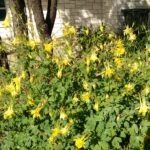 Spring, 2019 ~ Yellow Columbine (Aquilegia chrysantha) This popular native columbine brightens dark corners of Hill Country shade gardens with its colors and with the moths, butterflies and bees that pollinate it. Good drainage is required in any standard garden soil; Photo by Denise Coulter
Spring, 2019 ~ Yellow Columbine (Aquilegia chrysantha) This popular native columbine brightens dark corners of Hill Country shade gardens with its colors and with the moths, butterflies and bees that pollinate it. Good drainage is required in any standard garden soil; Photo by Denise Coulter
Settled in place, i
